

This is a merged information page for Item #4943.
View normal product page.
Pololu item #:
4943
Brand:
Pololu
Status:
Active and Preferred

| Output voltage | Typical max input current* | Min input voltage |
|---|---|---|
| 7.5 V | 1.6 A | 1.3 V (2.7 V startup) |
*Actual achievable maximum continuous current is a function of input voltage and is limited by thermal dissipation. See the output current graphs on the product pages for more information.
Alternatives available with variations in these parameter(s): output voltage Select variant…
 Compare all products in U3V16x Step-Up Voltage Regulators.
Compare all products in U3V16x Step-Up Voltage Regulators.
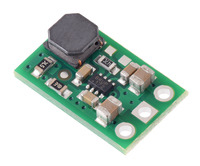 |
7.5V Step-Up Voltage Regulator U3V16F7. |
|---|
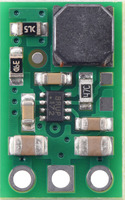 |
7.5V Step-Up Voltage Regulator U3V16F7, top view. |
|---|
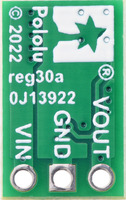 |
Step-Up Voltage Regulator U3V16Fx, bottom view. |
|---|
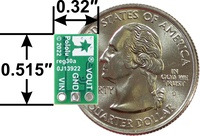 |
Step-Up Voltage Regulator U3V16Fx, bottom view with dimensions. |
|---|
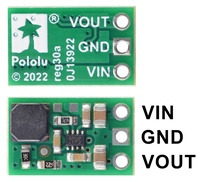 |
Step-Up Voltage Regulator U3V16Fx pinout. |
|---|
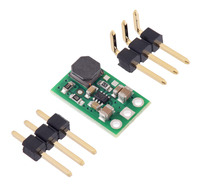 |
Step-Up Voltage Regulator U3V16Fx with included hardware. |
|---|
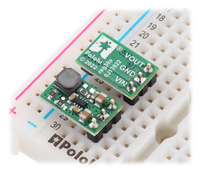 |
Step-Up Voltage Regulators U3V16Fx in a breadboard. |
|---|
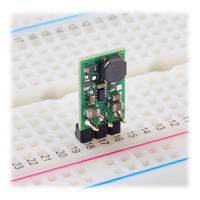 |
Step-Up Voltage Regulator U3V16Fx in a breadboard. |
|---|
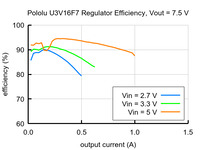 |
Typical efficiency of 7.5V Step-Up Voltage Regulator U3V16F7. |
|---|
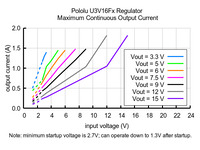 |
Typical maximum continuous output current of Step-Up Voltage Regulator U3V16Fx. |
|---|
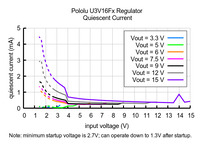 |
Typical quiescent current of Step-Up Voltage Regulator U3V16Fx. |
|---|
 |
Standard packaging for 7.5V Step-Up Voltage Regulator U3V16F7. |
|---|
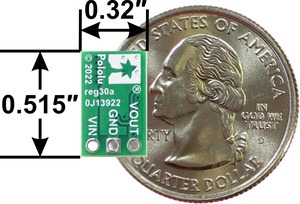 |
The U3V16Fx family of boost (step-up) voltage regulators generate higher output voltages from input voltages as low as 1.3 V. (Note: The minimum start-up voltage is 2.7 V; see the connections section for details.) They are switching regulators (also called switched-mode power supplies (SMPS) or DC-to-DC converters) and have a typical efficiency between 85% to 95%.
The regulators actively limit the instantaneous input currents to 2 A when boosting, and input currents up to around 1.6 A can typically be maintained for many minutes without triggering thermal shutdown, though the actual performance depends on the input and output voltages as well as external factors such as ambient temperature and airflow. For boost regulators, the output current equals the input current times the efficiency divided by the boost ratio of VOUT to VIN, so the more you are boosting, the lower the maximum output current will be (see the maximum continuous output current section below for performance graphs).
These regulators feature a variety of built-in protections, including cycle-by-cycle input current limiting, under-voltage lockout, and over-temperature shutdown.
Warning: This boost regulator uses the typical topology that connects the input to the output through an inductor and diode, with nothing to completely break that current path. Therefore, the input voltage will go through to the output even when the regulator is disabled, and exposure to short circuits or other excessive loads will damage the regulator. This regulator also does not have protection against reverse voltage.
The U3V16x family includes seven versions with fixed output voltages ranging from 3.3 V to 15 V.
The different versions of the board all look very similar, so you might consider adding your own markings or other distinguishing features if you have multiple versions that you need to be able to tell apart.
We manufacture these boards in-house at our Las Vegas facility, which gives us the flexibility to make these regulators with custom fixed output voltages between 2.7 V and 16 V. If you are interested in customization, please contact us.
 |
7.5V Step-Up Voltage Regulator U3V16F7, top view. |
|---|
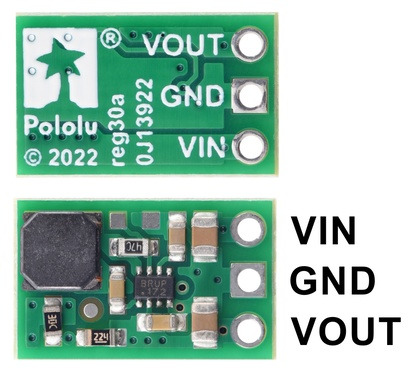 |
The input voltage, VIN, must initially be at least 2.7 V and should not exceed 16 V. Once the regulator is on, VIN can fall as low as 1.3 V and the regulator will continue to operate. Please note that if VIN is higher than VOUT, the higher input voltage will show up on the output, which could be dangerous for your connected load if it cannot tolerate that higher voltage. The regulator itself should generally be able to tolerate such pass-through voltages as long as they do not exceed 16 V and the load is not trying to draw currents through the regulator that are beyond what the regulator can withstand.
VOUT is the regulated output voltage. The regulator’s soft-start feature gradually ramps up the VOUT voltage on start-up to limit in-rush current draw. The U3V16Fx regulators do not have short-circuit protection, so they could be damaged if exposed to output shorts or excessive loads.
The connections are labeled on the back side of the PCB and are arranged with a 0.1″ spacing along the edge of the board for compatibility with solderless breadboards, connectors, and other prototyping arrangements that use a 0.1″ grid. You can solder wires directly to the board or solder in either the 1×3 straight male header strip or the 1×3 right-angle male header strip that are included.
|
|
|
The efficiency of a voltage regulator, defined as (Power out)/(Power in), is an important measure of its performance, especially when battery life or heat are concerns.
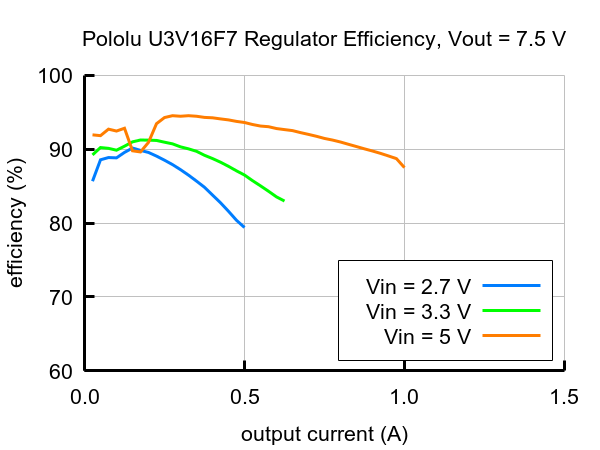 |
The maximum achievable output current is approximately proportional to the ratio of the input voltage to the output voltage. Additionally, the maximum output current can depend on other factors, including the ambient temperature and air flow. The graph below shows the typical maximum continuous output currents these regulators can deliver at room temperature with no forced airflow or heat sinking.
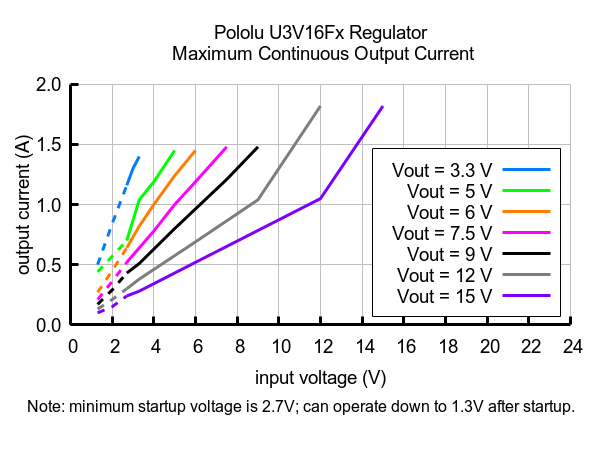 |
During normal operation, this product can get hot enough to burn you. Take care when handling this product or other components connected to it.
The quiescent current is the current the regulator uses just to power itself, and the graph below shows this for the different regulator versions as a function of the input voltage.
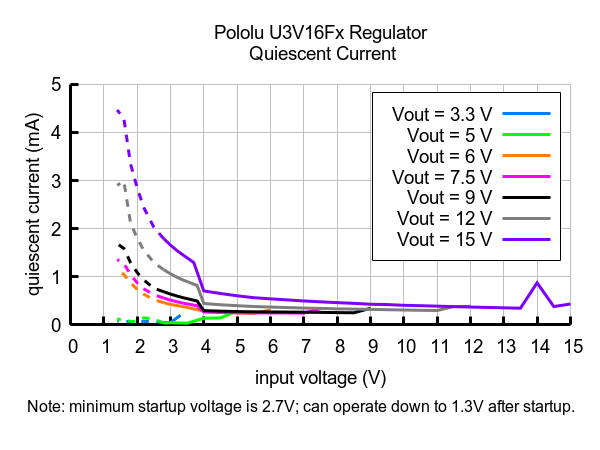 |
When connecting voltage to electronic circuits, the initial rush of current can cause damaging voltage spikes that are much higher than the input voltage. In our tests with this family of regulator connected with typical power leads (~30″ test clips), we found that input voltages up to 9 V did not generally cause spikes high enough to damage the regulator itself, but even lower input voltages did cause spikes that could still be problematic for boost regulators operating with the input voltage close to the set output voltage, since input voltages above the set output voltage will propagate to the output and could damage circuits being powered by the regulator. An electrolytic capacitor (33 μF is a good starting point) can be added close to the regulator between VIN and GND to help suppress these spikes.
More information about LC spikes can be found in our application note, Understanding Destructive LC Voltage Spikes.
| Size: | 0.32″ × 0.515″ × 0.1″1 |
|---|---|
| Weight: | 0.4 g1 |
| Minimum operating voltage: | 1.3 V2 |
|---|---|
| Maximum operating voltage: | 16 V3 |
| Maximum input current: | 2 A4 |
| Output voltage: | 7.5 V |
| Reverse voltage protection?: | N |
| PCB dev codes: | reg30a |
|---|---|
| Other PCB markings: | 0J13922 |
This DXF drawing shows the locations of all of the board’s holes.
No FAQs available.
We are excited to introduce our new compact and efficient U3V16Fx family of boost voltage regulators, which can generate higher voltages...